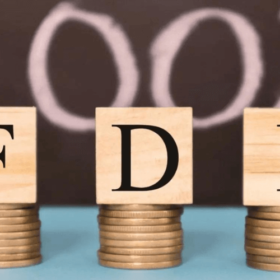
According to the Asian Development Bank (ADB) 2020 Asian Development Outlook Update Report (ADB) released on September 15, the total product (GDP) in developing Asia will decline by 9, 0,7% in 2020, then will bounce back and reach 6,8% in 2021.
However, the Vietnamese economy is still forecast to grow at 1,8% in 2020 amid the COVID-19 pandemic and a 6,3% increase in 2021. Economic growth remains steady. Gold in 2020 is largely attributable to the Government's success in controlling the spread of COVID-19.
During the announcement of the Asian Development Outlook Update (ADO) 2020, ADB's Country Director in Vietnam - Mr. Andrew Jeffries said that domestic consumption declined and global demand weakened due to The COVID-19 epidemic has affected the Vietnamese economy more than expected.
However, Vietnam's economic growth will remain solid in 2020 due to the contribution of many factors.
For the relay from the countryThis is due to the Government's success in controlling the spread of COVID-19. At the same time are the support from Vietnam's macroeconomic stability, increasing public spending, and ongoing reforms aimed at improving the business environment.
In addition, the fact that we have been participating in a large number of bilateral and multilateral trade agreements will also contribute to the recovery of Vietnam's economy. The most recent is the signing of the Vietnam - EU Free Trade Agreement (EVFTA).
Read more: Export sector starts to "bumper" with the Free Trade Agreement (EVFTA)
For the impact from the outside environmentVietnam is also more likely to benefit from the current shift of supply chains to lower cost countries. Typically from the ongoing production shift from China to Vietnam.
In addition to the positive impacts, the major impacts that remain, such as the long-lasting global COVID-19 pandemic, remain the greatest threat to Vietnam's growth prospects for this year and next.
The global recession and weakening domestic conditions, especially worsening unemployment and a dramatic decline in consumption, have hurt the economy more than expected. ADB believes that the economic outlook is still threatened by an increase in new COVID-19 infections since the end of July 7. On that basis, the growth forecast for 2020 is revised down by ADB from 2020 , 4,8% in the ADO 2020 Report and 4,1% in the June Additional ADO Report, down 6% in this report.
The report also identifies other threats to global trade tensions, leading to increased trade protectionism and financial risks that could be exacerbated by a prolonged pandemic.
In the context of epidemics, the decline of the global economy has caused private investment to decline sharply, the Government of Vietnam has had a "wise" solution to promote public investment and support economic growth.
There are still many challenges when disbursement progress is affected due to project implementation stages such as impact assessment, site clearance, some things are more difficult in case of epidemics ..., but disbursement progress is year. this is still higher than some years ago.
"ADB is committed to working with Vietnamese partners to more effectively implement public investment projects more effectively in the future," said Andrew Jeffries.
According to ADB, inflation could be pushed up by rising commodity prices and increased liquidity due to accelerated public investment. However, inflation will continue to be at a low level in 2020, lower than the target of 4,0%, due to persistent low growth and spending.
ADB said that lending activities will continue to be weak even though the State Bank has applied support measures. Banks, for their part, may not want to loosen lending standards to accept weaker corporate balance sheets, due to concerns of increasing bad debt at the end of loan restructuring. Credit demand from businesses also decreased, coupled with low demand for business products and services. As a result, bank credit is forecast to grow only 10% this year, much lower than the 14,0% target for year-on-year growth.
State bank.
With tax revenues falling as both incomes and exports decline, spending on health care and social security soar, and the possibility of adding a budget support package in 2020, the fiscal deficit It is forecasted to increase to 6,0% of GDP by 2020 and to decrease to 3,5% by 2021. Public investment disbursement in the first 6 months of 2020 is slow but will increase progress in the second half of the year. , helping the economy continue to maintain.
ADB's Chief Economist - Mr. Nguyen Minh Cuong analyzed foreign investment as follows: By 2021, investment will be boosted by improving public investment disbursement, production will continue to shift from China went to Vietnam, the Chinese economy recovered and a free trade agreement with the European Union came into effect to liberalize trade.
The Japan Foreign Trade Organization announced a list of 15 Japanese enterprises that would transfer their production activities from China to Vietnam. Most of the firms moved to Vietnam to manufacture medical equipment, and the rest to manufacture semiconductors, phone components, air conditioners or power modules.
Vietnam needs to change the way of competing to attract investment, not relying much on incentives, low costs as before, but rely heavily on quality, creating efficiency in quality, labor productivity, logistics.
"It is important that those investors meet the standards, transfer technology, meet environmental standards, create conditions for domestic businesses to connect," Mr. Nguyen Minh Cuong recommended.








